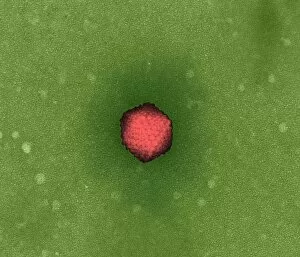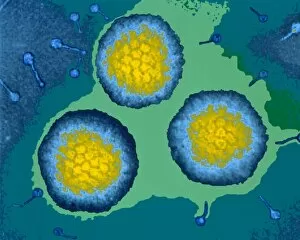Common Cold Collection (#2)
The common cold, a familiar ailment that plagues us all at some point, is caused by various viruses
For sale as Licensed Images
Choose your image, Select your licence and Download the media
The common cold, a familiar ailment that plagues us all at some point, is caused by various viruses. One of the most well-known culprits is the rhinovirus, which can be visualized through its molecular model C015 / 7139. This tiny virus, with its characteristic capsid structure (molecular model F006 / 9431), invades our respiratory system and triggers those annoying symptoms. But let's not forget about other viral troublemakers like adenovirus (TEM) or even the infamous coronavirus particles (TEM). These microscopic entities wreak havoc on our immune system and make us feel miserable. In an attempt to fight back against these pesky invaders, our body produces antibodies specifically designed to target them. The molecular model C015 / 7138 beautifully represents this interaction between rhinovirus and antibody - a battle taking place within us. When we think of the common cold, we often associate it with discomfort in specific areas such as the ear, nose, and throat. An artwork depicting this trio reminds us of how these regions become battlegrounds during a cold episode. Zooming in further under a microscope reveals intricate details of both influenza viruses and the common cold virus itself. These close-ups give us insight into their complex structures and help scientists understand their mechanisms better. Conceptual images showcasing coronaviruses remind us that while they may share similarities with other viruses causing the common cold, they have distinct characteristics that set them apart - as seen in TEM images displaying clusters of corona viruses F007 / 9886. Artworks like F007 / 1465 provide artistic interpretations of generic virus structures reminding us that despite their minuscule size, they possess immense power to disrupt our daily lives when we fall victim to their infections. So next time you find yourself sniffling or sneezing due to a runny nose or sore throat accompanied by fatigue – remember the microscopic world of viruses that are responsible for this inconvenience.
















